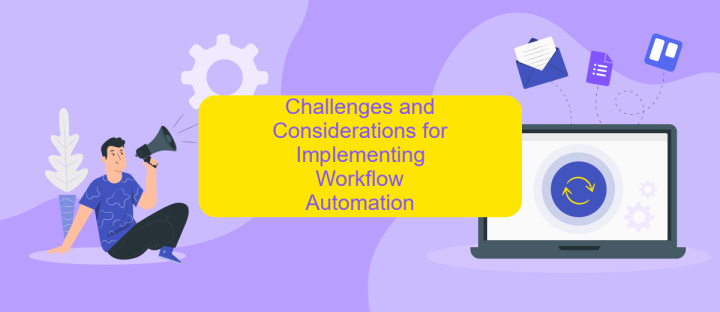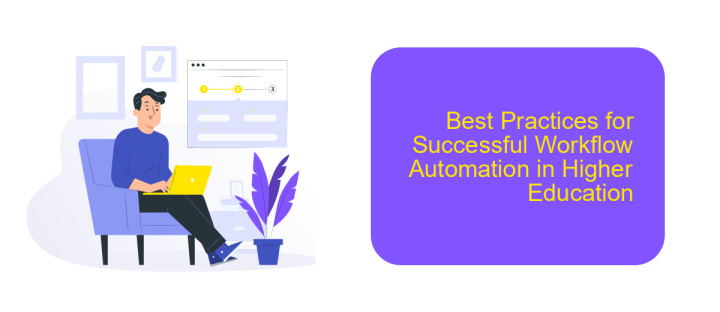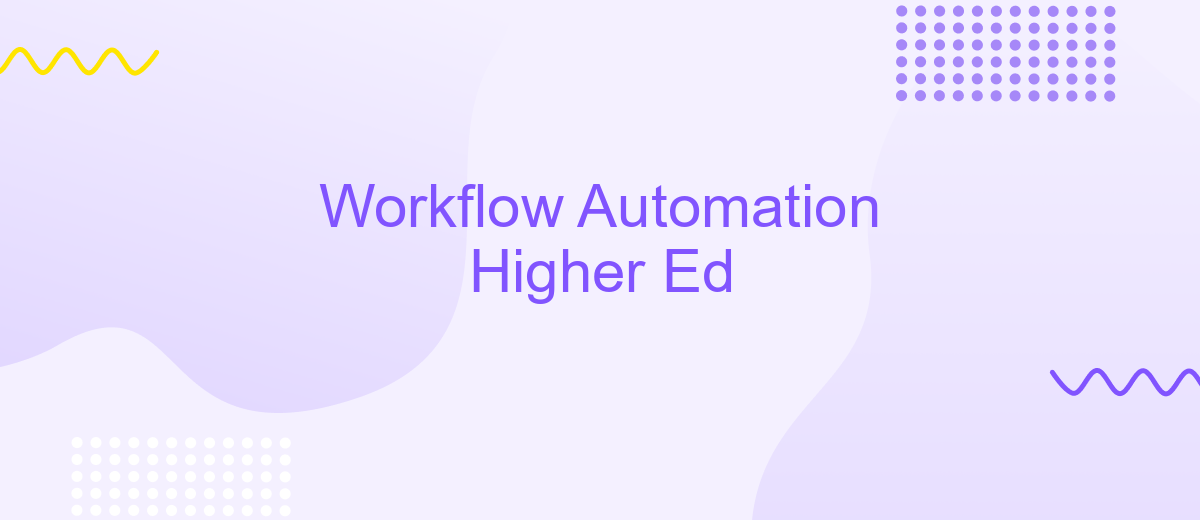Workflow Automation Higher Ed
Workflow automation in higher education is rapidly transforming the way institutions operate, enhancing efficiency, and improving the overall student experience. By automating repetitive tasks and streamlining processes, universities and colleges can allocate more resources to critical areas such as teaching, research, and student support. This article explores the benefits, challenges, and future trends of workflow automation in the higher education sector.
Introduction: The Rising Need for Workflow Automation in Higher Education
In today's fast-paced educational landscape, higher education institutions are increasingly recognizing the importance of workflow automation. As universities and colleges strive to enhance operational efficiency, reduce administrative burdens, and improve student experiences, the demand for automated solutions has never been higher.
- Streamlined administrative processes
- Enhanced data management and reporting
- Improved communication and collaboration
- Increased staff productivity
One of the key enablers of workflow automation in higher education is the integration of various software systems. Services like ApiX-Drive facilitate seamless integration between platforms, allowing institutions to automate data transfers and streamline processes. By leveraging such tools, higher education institutions can focus more on their core mission of teaching and research, while administrative tasks are efficiently managed in the background.
Benefits of Workflow Automation in Higher Education

Workflow automation in higher education offers numerous benefits, including significant time savings and increased efficiency. By automating repetitive tasks such as student enrollment, grading, and administrative workflows, institutions can free up valuable time for faculty and staff to focus on more critical activities like teaching and research. This not only enhances productivity but also improves the overall quality of education by allowing educators to dedicate more time to student engagement and curriculum development.
Additionally, workflow automation can lead to better data management and integration. Tools like ApiX-Drive facilitate seamless integration between various educational platforms, ensuring that data flows smoothly across systems. This reduces the risk of errors and inconsistencies, providing a more reliable and accurate data environment. Furthermore, automated workflows can enhance communication and collaboration among departments, leading to a more cohesive and efficient organizational structure. Ultimately, the adoption of workflow automation in higher education can lead to a more streamlined, effective, and responsive educational experience for both students and staff.
Challenges and Considerations for Implementing Workflow Automation

Implementing workflow automation in higher education institutions presents a range of challenges and considerations. Institutions must carefully evaluate these aspects to ensure a smooth transition and effective utilization of automation technologies.
- Integration Complexity: Integrating new automation tools with existing systems can be complex. Services like ApiX-Drive can facilitate seamless integration, reducing the technical burden.
- Cost Implications: Initial setup and ongoing maintenance of automated workflows can be costly. Institutions should analyze the cost-benefit ratio to justify investments.
- Data Security: Protecting sensitive student and staff data is paramount. Ensuring robust security measures are in place is crucial to prevent data breaches.
- Staff Training: Adequate training for staff is essential to maximize the benefits of automation tools. Institutions should invest in comprehensive training programs.
- Scalability: The chosen automation solution should be scalable to accommodate growing needs and evolving technological landscapes.
Addressing these challenges requires strategic planning and a clear understanding of institutional needs. By leveraging tools like ApiX-Drive for integration and focusing on training and security, higher education institutions can effectively implement workflow automation to enhance operational efficiency.
Best Practices for Successful Workflow Automation in Higher Education

Implementing workflow automation in higher education can significantly enhance operational efficiency and improve overall institutional effectiveness. To ensure successful automation, it is crucial to follow best practices that align with the unique needs of educational environments.
First, identify and analyze existing workflows to determine which processes can be automated for maximum impact. Prioritize tasks that are repetitive, time-consuming, and prone to human error. Engaging stakeholders from different departments will provide a comprehensive understanding of workflow requirements and potential improvements.
- Utilize robust automation tools that integrate seamlessly with existing systems. ApiX-Drive, for instance, offers powerful integration capabilities that connect various applications and streamline data flow.
- Ensure proper training and support for staff to adapt to new automated processes. This includes providing resources and continuous learning opportunities.
- Regularly monitor and evaluate the performance of automated workflows to identify areas for refinement and enhancement.
By adhering to these best practices, higher education institutions can leverage workflow automation to reduce manual workload, enhance accuracy, and enable staff to focus on more strategic, value-added activities. This approach not only optimizes operational efficiency but also contributes to a more dynamic and responsive educational environment.
Conclusion: The Transformative Power of Workflow Automation in Higher Education
Workflow automation is revolutionizing higher education by streamlining administrative tasks, enhancing communication, and improving overall efficiency. By automating repetitive processes, educational institutions can allocate more resources towards enriching the student experience and advancing academic goals. This shift not only reduces operational costs but also fosters a more agile and responsive educational environment.
Moreover, the integration of tools like ApiX-Drive facilitates seamless connectivity between various educational platforms and systems. This ensures that data flows effortlessly across departments, enabling real-time updates and reducing the margin for human error. As higher education institutions continue to embrace workflow automation, they are poised to cultivate a more innovative, efficient, and student-centric academic landscape.
FAQ
What is workflow automation in higher education?
How can workflow automation benefit higher education institutions?
What are some common processes that can be automated in higher education?
How can higher education institutions implement workflow automation?
What challenges might institutions face when adopting workflow automation?
Do you want to achieve your goals in business, career and life faster and better? Do it with ApiX-Drive – a tool that will remove a significant part of the routine from workflows and free up additional time to achieve your goals. Test the capabilities of Apix-Drive for free – see for yourself the effectiveness of the tool.

